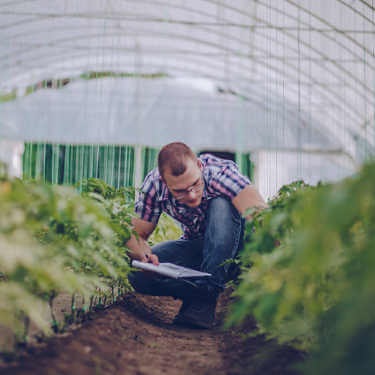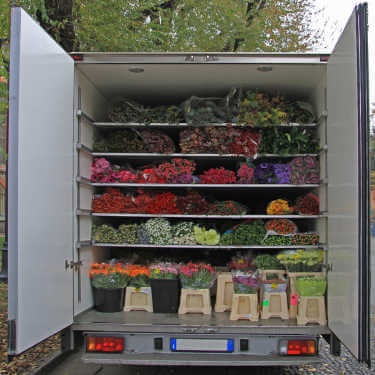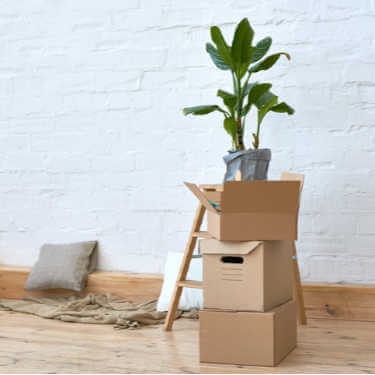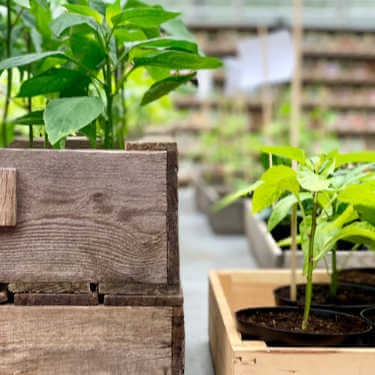If you’re shipping plants in bulk from California, you’re part of a large group. The diverse ecosystems and environments in California lend it to a vast array of different types of plants, from meadows, desert scrub, and coastal wetlands to sandy beaches, and oak woodlands. There are many different types of plants you can ship from California. As a state with a Mediterranean-like warm climate with mild winters, California has the ability to grow most commercial plants.
Regardless of the plants you’re shipping there are several things to consider when shipping plants in bulk from California. You’ll need to comply with federal and state regulations in place through the USDA and APHIS. It will also help to know the best practices for packing plants safely and properly. Finally, there are several shipping options to explore to determine what’s best for your business.
The United States has many regulations for shipping plants. There are federal as well as state regulations in place that you must consider when shipping plants, especially when shipping to states like Florida, where citrus is a large part of the economy, or Idaho, where potatoes are king.
These regulations are in place to prevent the movement of noxious weeds and plant pests. The USDA says that noxious weeds are considered any plant that can injure or cause damage to crops and other aspects of agriculture or public health. Meanwhile, plant pests, such as insects or mites, are living things that can cause harm or disease to any plant or plant product.

When shipping plants in bulk from California you first need to determine what regulations are in place in the state you are shipping them to. The U.S. Department of Agriculture, Animal, and Plant Health Inspection Service, Plant Protection and Quarantine Program (USDA APHIS PPQ) and state plant health agencies regulate the shipping of plants.
There are a few ways in which states regulate plants, understanding them can help you know what to be mindful of when thinking of shipping plants.
For example, there are certain conditions where only plants that have been grown and kept indoors can be moved. Other times plants that are in pots must contain fresh and sterile potting soil. Most states will require an inspector to come and inspect the plants and assure that everything is up to standards by issuing an inspection certificate to the mover. Other regulations are that certain plants must undergo a quarantine period. Some plants are even banned altogether and border inspectors are under obligation to confiscate any and all plants they deem necessary.
In order to be a more informed business owner, you should check the USDA website for more specifics on federal regulations. The USDA has outlined the federal laws for shipping plants anywhere in the United States.
Just as with the USDA regulations, you should be sure the check out each state's own Department of Agriculture that you will be shipping your plants to or through. The National Plant Board, an organization that coordinates the plant pest agencies in the United States, has a comprehensive list of all the states laws and regulations. You can even search further and directly contact a state’s plant health director to find exactly what you need to know when shipping plants in bulk from California or any state.
When shipping plants it is paramount that you understand plant quarantine guidelines and what a plant quarantine is. The goal of a plant quarantine is to eradicate and stop the spread of dangerous pests. Agriculture is such a huge part of many states economies and these states will do anything to protect that industry.
A plant quarantine is a restriction where the production, movement, or existence of certain plants is regulated to control the spread of pests. Quarantines are determined necessary by public authorities and each state may have a different plant species under quarantine. When shipping plants you must know what plants are under quarantine and are or are not allowed into certain states.
There are several types of quarantine actions that can be taken.
If you are planning on shipping plants in bulk from California you will want to have a good understanding of the plants that California quarantines. You will be one step ahead as a business owner if you know and understand all the regulations regarding shipping plants.
There are some rules and regulations for shipping plants in California. These aren't the only guidelines you'll need to follow. Learn more about California Shipping Restrictions.
When shipping anything you want it to arrive safely and without damage. This is even more important when you are shipping plants. You definitely don’t want your precious hydrangeas to arrive wilted and on their last stretch of life. That is bad for business and bad for the plant.
Moreover, when shipping in bulk from California, which is generally considered a hot state, it is foremost that your plants are packed properly.
There are several things you need to know that will help when packing your plants.

The first step is to prepare the plant for packing. You should take the plants you have decided to ship and remove most of the excess soil. Do this by shaking it off, but do not wash the plant’s roots. This is important because the remaining soil will provide an easier transition for the plant by ensuring that microbes from the native soil travel with the plant.
The next thing you need to do in preparation of packing is give the plant a little water. Do this by wrapping the plant's roots in moist paper towels. Depending on the nature and length of the shipment you may want to take extra measures to protect the plants. You can do this by adding several teaspoons of polymer moisture crystals to water to form a mixture that you can apply to the roots of the plants. Then, simply contain with a plastic bag.
One final step is to tie together any plant growth so it doesn’t break in transit. Do this by using plant ties, rubber bands or twisty ties. If you are shipping in bulk and you don’t want to invest in plant ties etc. you can also use newspapers. Just roll the plants in the newspapers and like magic, you can protect the tops and stems!
You have prepared the plants for packing and they are almost ready to go. Your next choice will be what kind of box to ship the plants in. A good sturdy box is crucial to plant safety. Many things can happen when shipping plants, especially if you ship them in a truck with other commodities than plants that don’t have to be handled with as much care.
Choose a box that is barely larger than the plants themselves as this will ensure minimal movement during the shipment. If there does happen to be extra room in the box you can use padding such as newspaper or foam to fill in that space. Finally, use filament tape to reinforce the box.
Now, if you are shipping plants that are potted understand there are a few more tips you should know.
To make sure the soil stays in the pot, use a cardboard collar to place over the soil and at the base of the plant. Add a plastic bag to close around the base of the plant and wrap the whole thing in bubble wrap. Place the plant upright in your chosen box and DO NOT FORGET to write “This End Up” on the box.
We are now at the labeling step in the process. There are all sorts of different names for plants that it’s important to label it correctly so there is no confusion upon arrival. Remember to add a label to the inside of the box as well as the outside of what type of plant it is. Also, add labels to the outside that read “perishable” and “live plant” so the movers know to treat it with care.
Whether you are mailing several plants or shipping plants in bulk, it will pay off, in the end, to pack them properly.
You have your plants all packed up and ready to go, but now you need to figure out the best way to ship them. There are a few things to remember when shipping plants. Largely, plants sometimes shouldn’t be shipped with other food products.
Mixed load shipping of plants with food products can slow down the delivery time of your plants and add costs you didn’t see coming. It might seem like a good idea, you want to utilize a truck with a refrigerated container and you think your plants will thank you for it. However, in the food industry transporting mixed loads increase the risk for cross-contamination. This is a big problem in the food industry and the FDA even wrote a guide on the sanitary transportation of food.

There is also a risk of introducing pests to a truckload that cause issues when mixed load shipping with plants. Other businesses don’t want their products becoming infested with insects or other pests. Just remember when shipping plants in bulk from California or any state actually, shipment methods matter.
Plants aren't the only product moving from California. Learn more about shipping seasonal produce from California.
Speaking of shipment methods, here are some tips on choosing the right shipping service!
As a business owner who has decided to ship plants in bulk from California there are a few choices you can decide between when it comes to shipping.
Pros
Expedited shipping is exactly what it says, shipping that has a faster than normal delivery time. This type of shipping is great for when you have perishable goods, such as plants, and you want them delivered as fast as possible. It allows business owners to set more specific delivery requirements. It is great with time-sensitive offers or products that are seasonal, which means almost every type of plant.
This type of shipping gives you a set delivery time. Goods that are sent through expedited shipping have precise schedules and real-time status notifications give business owners more information about the shipment. Another pro of expedited shipping is that there are fewer touchpoints, this means your goods will be handled less and reduces the probability of damage they could incur.
Cons
Of course, there are a few disadvantages to expedited shipping. The number one problem with it is that it’s more expensive. If you want your goods delivered faster, you’re going to have to pay a pretty penny for it. Also, accidents can happen so make sure you read the contract carefully and look for the part about taking liability for your cargo from the company.
Pros
Standard shipping is the default for most shipping. It is where you have met the minimum order for free shipping. The most obvious advantage to standard shipping is that it is clearly the less expensive option. Depending on your budget this may be the better option, specifically if your plants have a longer lifespan and less need of daily care.
Cons
If you are a fledgling nursery business and you can’t afford expedited shipping, then standard is the way to go. But, don’t forget to weigh this against the fact that standard takes significantly longer than expedited. Think about the types of plants you are shipping and if they can withstand the longer journey. Also, think about the weather and season in which you are shipping the plants. In winter they will most certainly need more insulation whereas in the summer they may need more moisture.
Other considerations you may have when shipping plants in bulk from California is whether to choose LTL freight or FTL freight.
LTL freight refers to “less than truckload” freight shipping. When you are shipping small plants or possibly plant clippings this may be the better option for you. LTL is used when your product doesn’t require the use of an entire truck. When your plants weigh between 150 to 20,000 lbs you can utilize LTL freight shipping. In this case, you pay for your portion of truck space while other companies pay for the remaining space.
LTL is beneficial when you are trying to minimize your costs, however, when shipping in bulk it may not be the most viable option.
Conversely, FTL freight refers to “full truckload” and sounds just like its name. You would choose this option when your cargo will take up the space of the entire truck. If you are shipping plants in bulk from California you may be shipping large plants such as trees or large quantities of flowers. When this is the situation it is most likely less expensive to choose FTL freight. If you have enough plants to fill an entire truck and they have the same origin and destination than FTL will be less expensive.

Additionally, FTL is usually faster than LTL because it doesn’t involve so many stops. LTL works on a hub-and-spoke system where trucks are constantly stopping to transfer and pick up more freight. FTL functions on a point to point system where the truck only has one final destination. Also, the LTL system results in more handling of your products, and when shipping fragile plants it can be harmful for them to be passed from hand to hand.
Shipping plants can be a risky business. Many customers may cause issues if a plant arrives at their doorstep looking dead, but what they may not understand is that it’s simply wilted and needs water. Similarly, accidents do happen and weather is a tremendous factor when shipping plants. As a business, your first priority is always to take care of the customer, but you also want to recover some of the costs. With these considerations in mind, you might want to look into purchasing insurance when shipping plants.
One thing to consider before you purchase insurance is the risk that your plants could be stolen, lost, or damaged and the destination of the plants. Some cities are more prone to theft than others. Meanwhile, more expensive plants are more likely to be stolen than cheaper ones. As mentioned before accidents can happen so it’s best to be prepared.
Questions to ask yourself when considering buying insurance are:
A sure way to determine if you need insurance when shipping plants is to look at the average cost to insure them. If it is cheaper to insure your plants than to spend money replacing lost, stolen, or damaged ones you should probably buy insurance to mitigate the risk.
Shipping plants and other freight in bulk from California to Florida and other states may seem like a big undertaking. To make it easier, connect with R+L Global Logistics. We have over 30 years of experience and knowledge that we put to work for you. In addition to handling your plant shipments, we offer other world-class services that are focused on maximizing the efficiency of your business. Whether you need more space for your products or simply need help with distribution, we’ve got you covered for freight shipping to California and around the country.
We can take care of all your shipping needs and make the process stress-free so you can get back to the business you love. Connect with us today to learn more about how we can help your business.
R+L Global Logistics
315 NE 14th St., Ocala, FL 34470